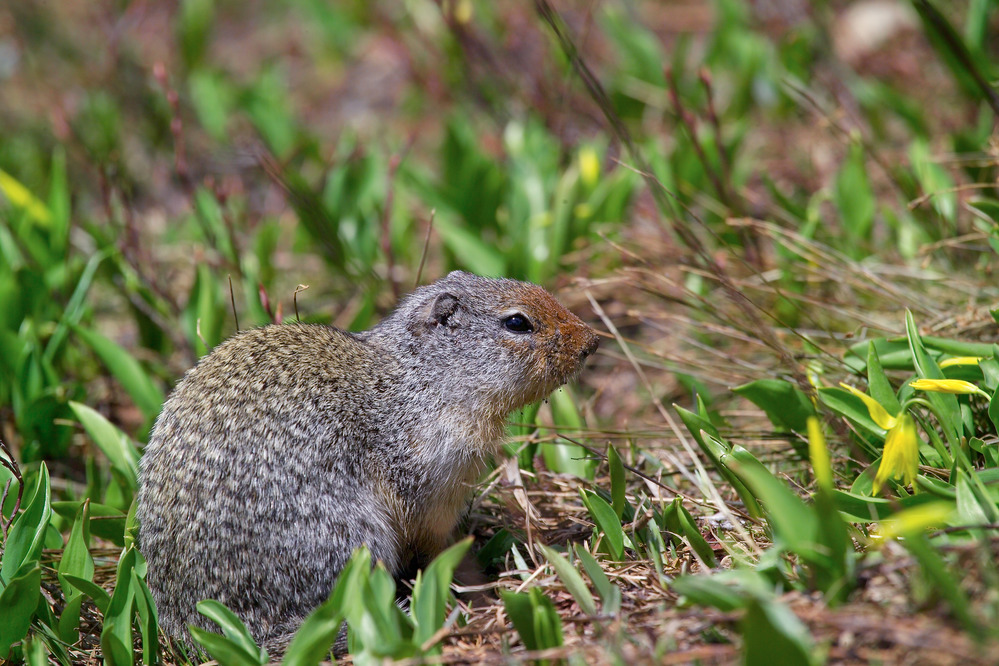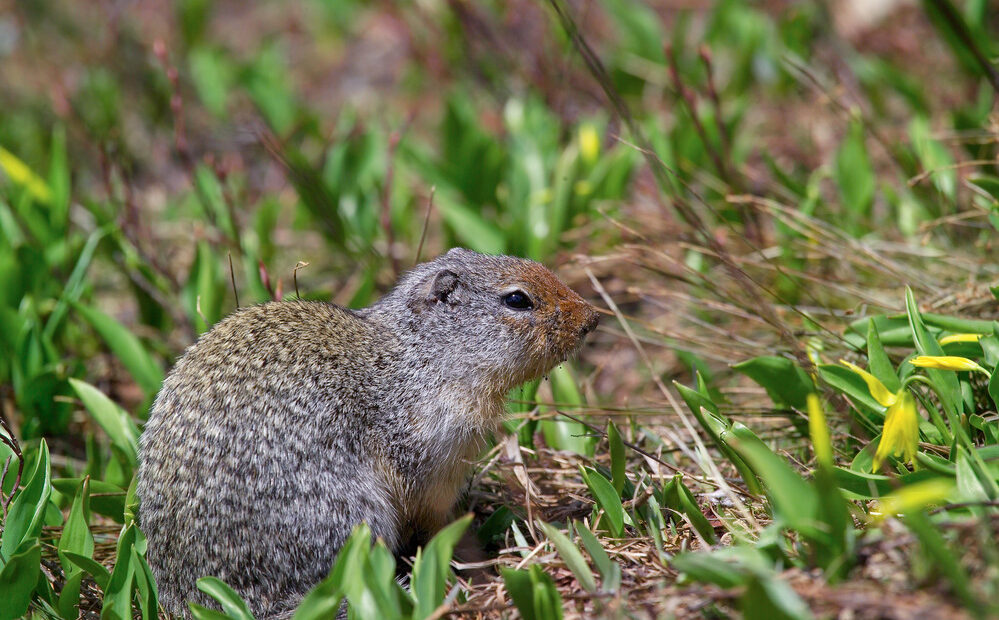
Ground Squirrel “High School” features classes, cliques and clubs
Listen
(Runtime :57)
Read
The Lolo Pass Visitors Center in the Nez Perce-Clearwater National Forests straddles the line between Idaho and Montana. It’s surrounded by mountains covered in a thick forest of evergreen trees. Darting between the rocks and the hills surrounding the center are entire families of ground squirrels.
“I get a lot of people who come in and ask me, ‘What are those little animals outside?’” said Sacha Wells, an interpretive educator and park ranger.
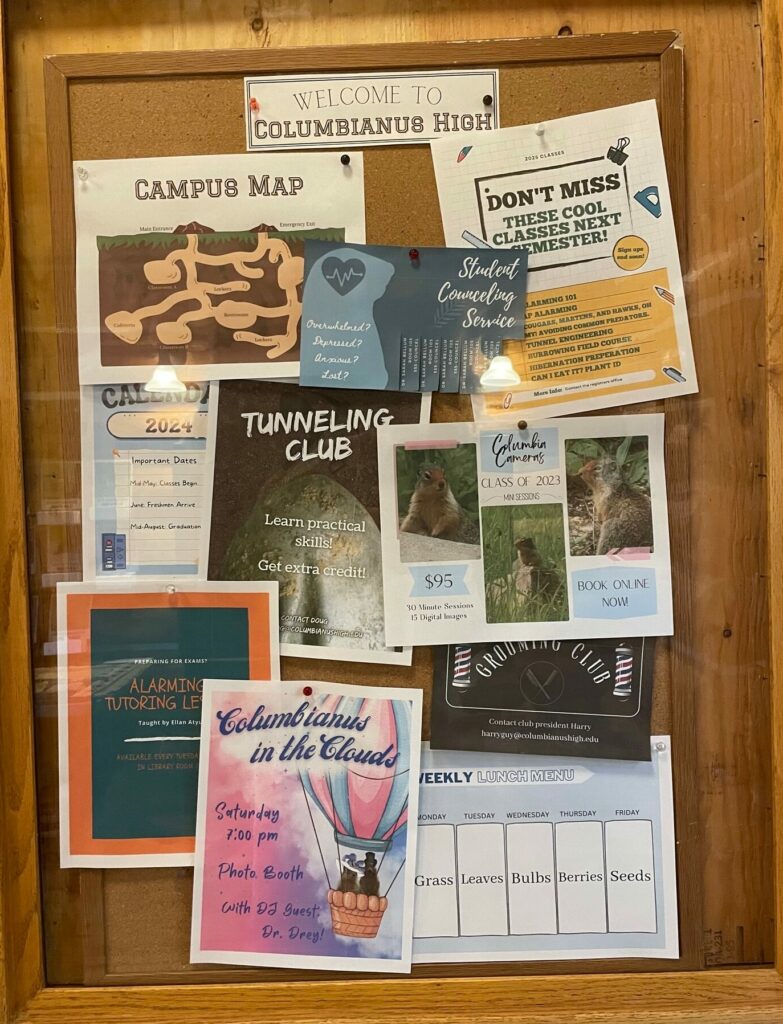
Fictional clubs, photography packages and classes were created for “Columbianus High.” (Credit: Sacha Wells / Nez Perce-Clearwater National Forests)
Because ground squirrels are often confused for groundhogs or weasels, Wells decided to put together a program to educate visitors about the Columbian ground squirrels. She created “Columbianus High,”named for the rodents’ scientific name Urocitellus columbianus.
The fictional high school features posters of classes like “hibernation preparation” and “tunnel engineering.” The campus map displays a series of burrows. The lunch menu includes meals like bulbs, berries and seeds.
A high school captures the similar life patterns of ground squirrels, said Wells in a press release. “High schools are cyclical. You go, you do your work, and you come back next year to do it all again.” The same goes for the squirrels who have to work to gather food and build dens before hibernation begins again, said Wells.
Under a big display of individual ground squirrel photos, visitors at Lolo Pass were encouraged to vote for a series of superlatives like “Best Smile” and “Most Likely to Ask for Lunch Money.”
“Education is more effective if people can participate in something, so I tried to make it fun with a voting aspect,” said Wells.
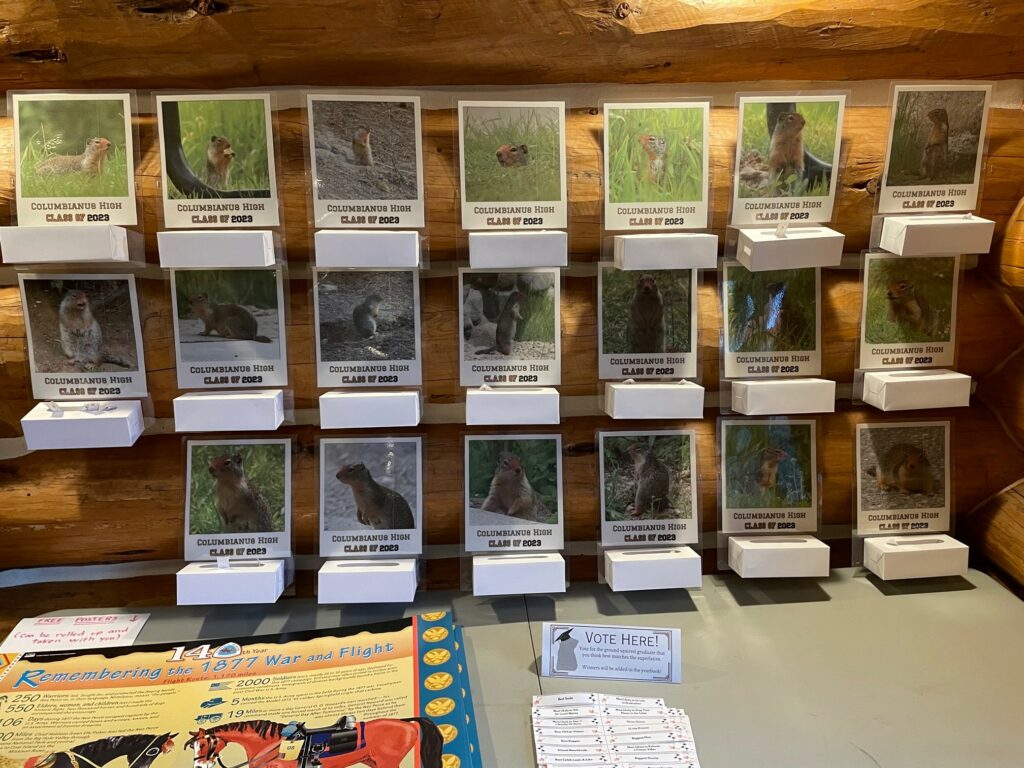
Photos of ground squirrels living around the Lolo Pass Visitor’s Center were taken by Wells and displayed with little boxes to tally the votes of visitors for superlatives like “Best Tik-Tok Videos” and “Biggest Flirt.” (Credit: Sacha Wells / Nez Perce-Clearwater National Forest)
The adorable expressions of the rodents let people create their own characters for the ground squirrels, said Wells.
“Everyone agreed on the ‘Biggest Flirt,’ everyone agreed on ‘Class Clown,’ who got 70 votes alone,” said Wells.
The high school display included a big poster with information and educational fun facts about the rodents.
There are 19 species of ground-dwelling squirrels in the Pacific Northwest. Idaho is home to the most species at 13, followed by Oregon with 10 and Washington with eight. “The Columbian ground squirrels hibernate for more than eight months out of the year,” said Jennifer Bruns, a communications manager for Idaho Fish and Game.“They’re only active for about 64 days of the year.”
The ground squirrels weren’t the only “students” this summer, said Wells.
Part of the education outreach is making sure visitors learn “ground squirrel etiquette,” and what not to do with wild animals in nature. Feeding the cute, furry creatures is tempting, but can cause problems, said Wells.
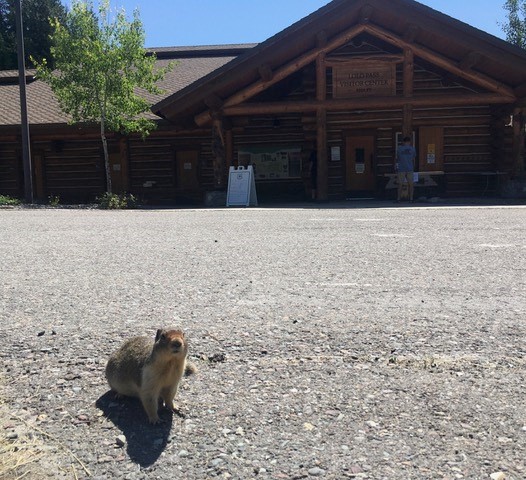
The ground squirrels featured in the photos and Columbianus High live around the Lolo Pass Visitor’s Center in north Idaho. (Credit: Sacha Wells / Nez Perce Clearwater National Forests)

